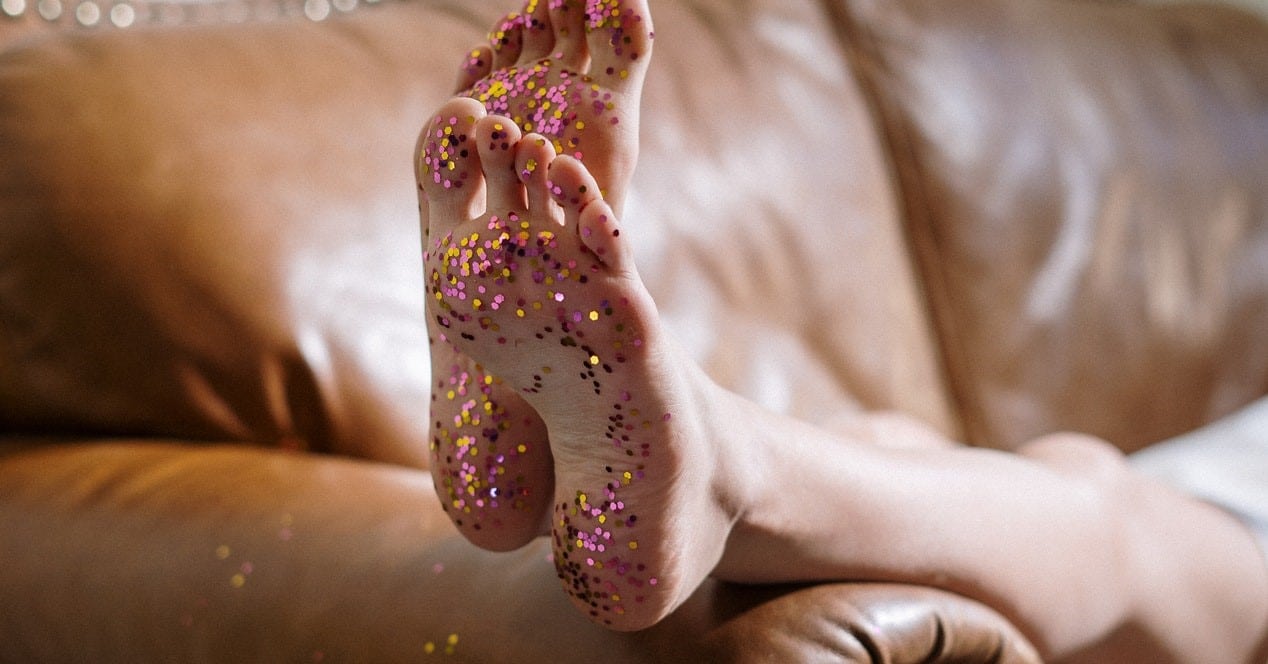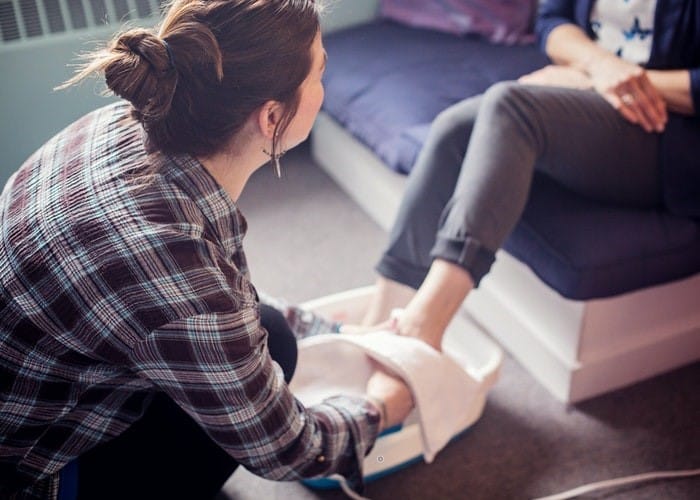
The calluses on the feet, those whitish, hard and rough areas that we have in some parts of our feet and that it seems that we only remember them, or only see them, when the good weather arrives and we want to take our feet out of our boots and not to wear socks again in a little while. But no, feet must be taken care of as much or more than other parts of the body, so we are going to give some remedies to get rid of calluses whatever time of year it is.
Hardness, cracks. rough areas, thickened nails, etc. They are calluses and although we may not believe it, it is the door to a universe of billions of bacteria and fungi, which is why, throughout this text, we are going to place special emphasis on foot care and visiting a podiatrist a few twice a year minimum.
Within the corns there are two types and none of them are a serious health condition. On the one hand, we have the soft calluses that usually appear in humid areas of the foot and are the ones that we must take care of the most to avoid infections and fungi. On the other hand, we have hard calluses, also known as vascular calluses, which are quite painful on some occasions and this is precisely because it has blood capillaries and it is quite common for them to touch a nerve.
Causes of calluses on feet
Everything in this life arises for a reason, and the calluses were not going to be less. There are many causes that result in these hardened chafing and we are going to review the most relevant ones, but we can already say that the care we take of our feet is key to developing hardness or not.
- Ill-fitting footwear, the shoe should not be too tight or too loose.
- Damp feet or with a tendency to sweat.
- Areas of the foot that constantly rub against the shoe.
- Lack of hydration.
- Poor cleaning and care.
If we notice this type of discomfort, or higher ones that prevent us from wearing a type of shoe or even walking, we strongly recommend visiting a podiatrist, since we could have a nail-shaped callus, that is, instead of going out It goes inwards, even touching the bone and that is very painful.

Methods to remove calluses
Calluses, cracks, dead skin, hardened and rough areas can be easily removed, but we recommend seeing a podiatrist. In Spain the average price of a podiatry consultation is around 25-30 euros, it is also true that it depends on the area or city, the clinic and the work that they have to do on our feet.
specific instrumentation
On the market there are many electric and manual utensils that will help us say goodbye to calluses and calluses, but they are not so easy to use. We must go little by little and stop when we notice a discomfort, that will mean that the callus has been removed and we are already on top of the good skin. In almost vascular hardness, it is best to go to a professional and they will relieve us of this discomfort quickly and safely.
The main electric and manual instruments to remove calluses are usually files, pumice stone, scrapers, callus cutters, etc. All of them serve to eliminate the hard part and release the healthy skin, but be careful or we will cause an injury if we exert a lot of friction.
make use of chemistry
With this anti-hardness remedy you also have to be careful. When we say chemicals, we don't mean bleach, but salicylic acid which is sold in pharmacies and serves precisely to burn the superficial cells of the skin and facilitate the removal of calluses and calluses almost effortlessly.
This option should be used only on healthy skin, no sensitive skin, or wounds, scabs, or blood. It is only suitable for adults, no children, no animals, and if you almost want to use it on the skin of an older adult, it is best to ask a specialist.
Baking soda
Another very effective solution to eliminate these annoying and unsightly scratches. The sodium bicarbonate must be mixed with water and get a kind of paste that will be spread later on the area of the foot where there are calluses. Let it act for about 20 minutes and carefully remove it.
What is achieved with this is to remove the superficial layer of hardness, thus facilitating part of the work. When the area is dry, we can use a pumice stone or a special file to finish the job quickly.
We recommend making a little of this mixture and trying it on a callus or rough area of the foot to see if this option works for us or not. Once again we remember to use this option only on healthy skin, no wounds, no blood, no stains, burns or anything to use it on the skin of a child or an animal.

Chamomile infusion
You have to make several cups of Chamomile infusions and let it lose a little temperature so as not to damage the skin of our feet. Then we pour that liquid into a basin or somewhere where our feet fit. Another option is to reserve half of the total infusions and make one foot first and then the other.
Next, we leave both feet to soak and after a few minutes, approximately 15 minutes, we use a pumice stone, a scraper, a callus cutter, a file (manual or electric), etc.
Onion, lemon and salt
It looks like the ingredients of a recipe and it almost is, but it is to eliminate hardness. There is also another version of garlic and oil, and yes, both are a bit unpleasant (in smell and texture), but effective (not much) to soften hard skin and remove them quickly.
They are home remedies and have passed from generation to generation. They are not very effective, but it never hurts to have more options in case the above does not work.
How to prevent corns
If we have read the causes of corns, we will know that there are ways to prevent their appearance and that is what we are going to focus on right now. If we implement these tips or tricks to prevent hardness, we will have healthy feet free of infections and pain.
- After each shower, dry the area well and use special moisturizing cream for feet.
- Do not wear tight or very loose shoes.
- The sports shoes must be of quality, that do not hurt anywhere and have good materials and cushioning.
- Long toes and stiletto heels are our enemies.
- Once a week we can put our feet in salt water and remove the hardness.
- Wear only breathable socks to avoid moisture.
- Cut the nails, but do not leave them flush with the skin.
- Go to a minimum podiatrist at each change of season, for example, once in summer and once in winter at least.